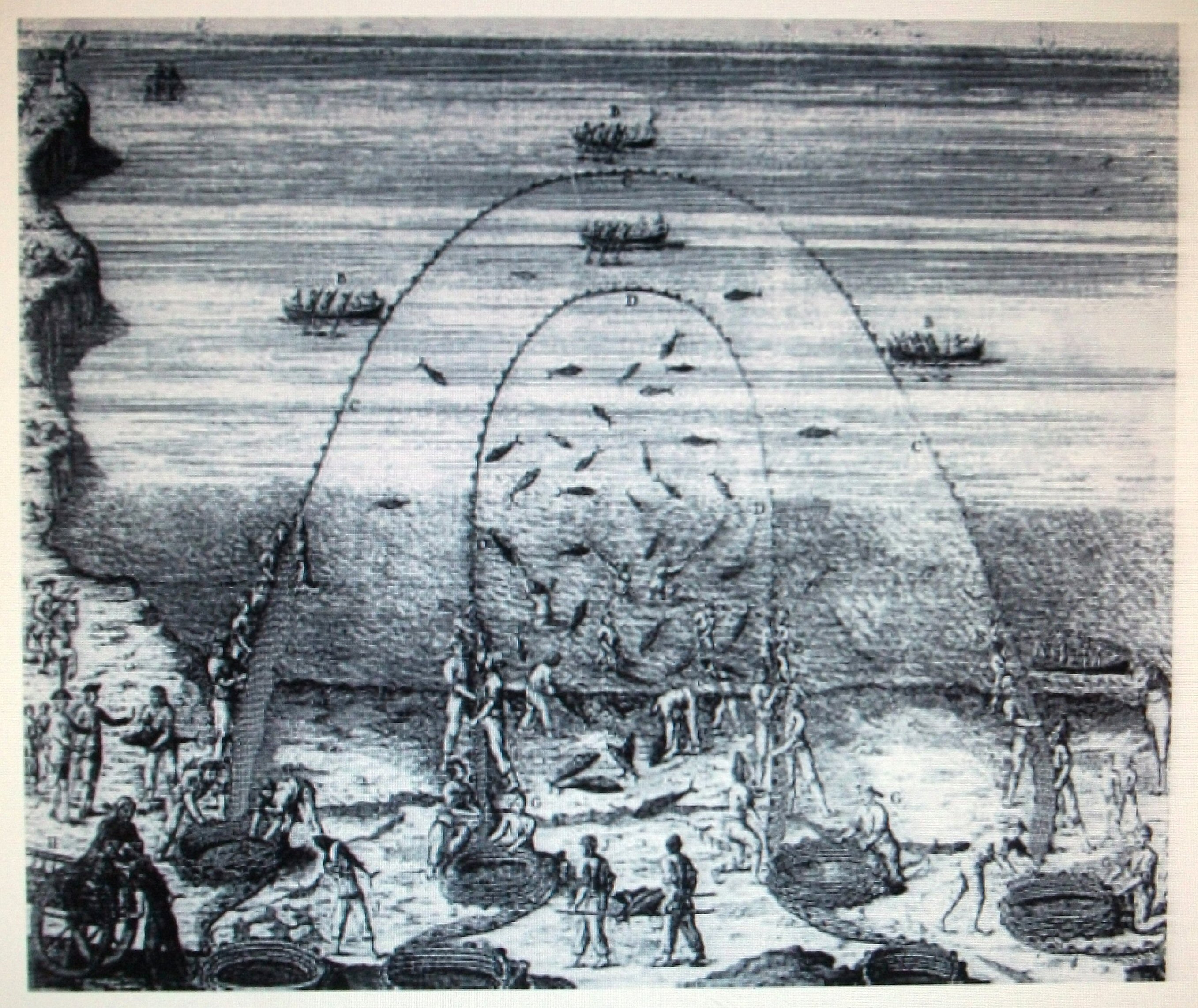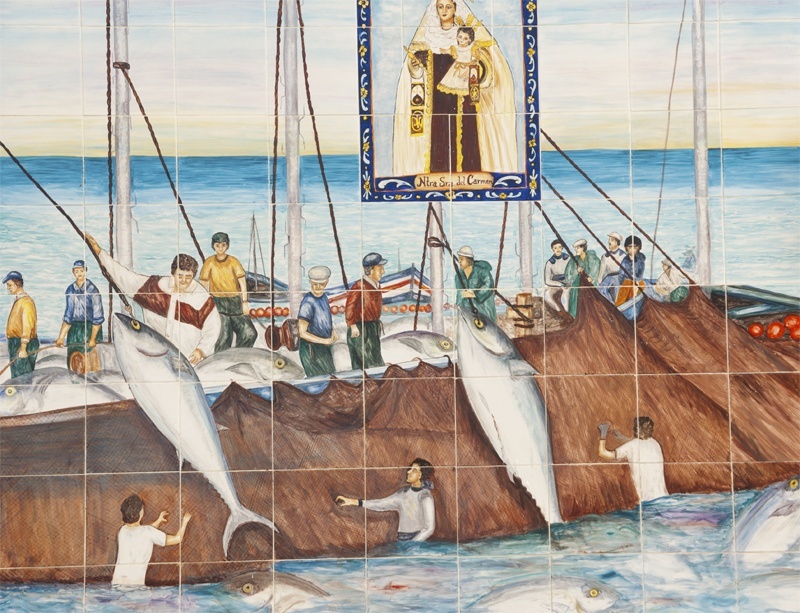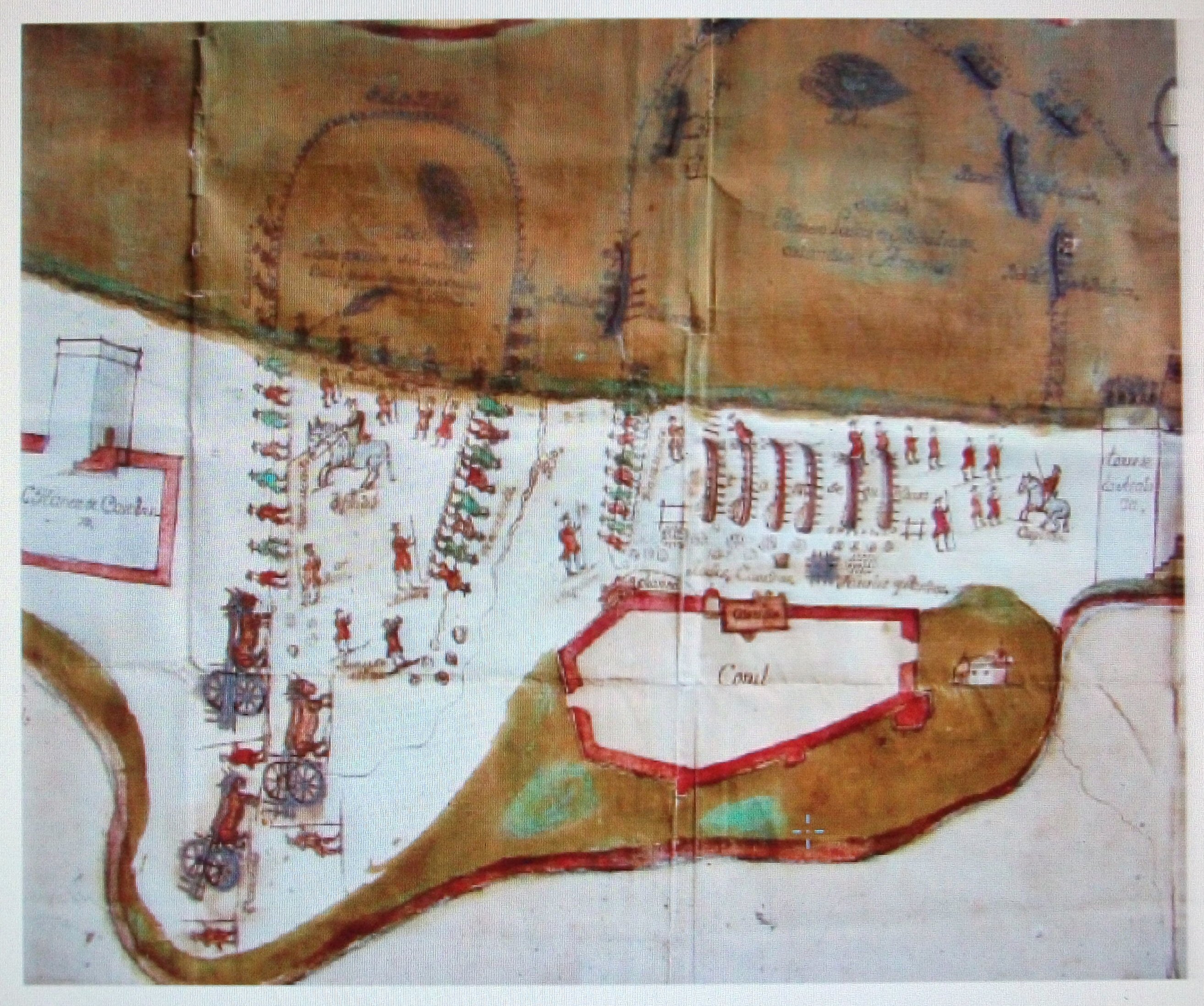The gifts of towns and ports, firstly by King Alfonso X, then Sancho IV had given Alonso Pérez de Guzmán and his family a sizable income. Maria’s dowry had brought vineyards and flourmills around Seville, and when he left Morocco behind for good, he began buying land that the Marinid invasions had left desolate and depopulated. The Cortez was a battleground where he was outgunned by the likes of Pedro Ponce de León, who controlled the finances of the kingdom. Pedro and his brother owned lands adjacent to Guzmán’s and were eager to extend their territory. There were other powerful families jostling for favour with Maria de Molina and King Ferdinand, and the ever perfidious, John, the Traitor of Tarifa, wove his webs of intrigue amongst all of them.
Guzmán had faithfully served three kings of Castile now, and Maria de Molina knew that he was unhappy in her court. Much of western Iberia had been abandoned, and the people had moved north of Seville where the African invasions rarely reached. The territory that Guzmán owned was unproductive and lawless, but before the invasions it had been a very rich and fertile area that had supported Moors and Christians for centuries. The Order of Calatrava had been given charge of the lands around Huelva and Niebla, but they were too busy hatching plots against each other to bring stability to the west coast. Maria was very clever, and knew where the money was. She released Guzmán and gave him the gift of the almadrabas of Conil and Chiclana. The Calatravans had been running the almadrabas, and she suspected that a lot of the money that they earned was not appearing as revenue in the coffers of her kingdom.
For thousands of years the fishermen of the west coast of Iberia had reaped a harvest from the Atlantic Ocean between the first full moon in May and the end of July. Far out in mid-Atlantic, Bluefin Tuna that had fed all winter began to migrate down the Iberian coast to enter the Mediterranean and spawn. They came in their hundreds of thousands and were pursued by the most ferocious hunters in the sea; killer whales. Knowing that the huge Orcas could not come into shallow water by the beaches, the tuna shoaled close to the shore. This is where the fishermen laid their traps to catch them. Down the west coast, and through the straits, teams of fishermen laid out elaborate systems of nets. The traps were only effective on a gently sloping beach with no underwater obstacles. There were several small traps such as Sancti Petri and Castilnova, Cadiz, and Huelva, but by virtue of their beaches, the biggest and most productive were at Chiclana, Barbate, Zahara, Conil and Tarifa.

The tira, or looped nets system of catching the tuna.
When Guzmán arrived at Conil he discovered a meticulously planned and executed operation for catching the huge fish. A cabal of highly skilled fishermen, who knew the ways of the atun, organised the hundreds of itinerant workers who arrived every year at Huelva to work in the traps. At the same time, the salinas dotted up and down the coast loaded their salt onto wagons and began to deliver it to the fishing sites. Carpenters around Donaña and Bollullos began cutting Holm Oak to repair boats and make oars, whilst others cut cork for floats for the nets. Willow hoops for the barrels were made by highly skilled tradesmen in Rocinas, and all these essential products were delivered to the beaches where the men who would cut up, salt and pack the huge fish were setting up their trellises and tables. Nets were made or repaired in warehouses in Huelva and shipped to the traps, where they were coiled on the beach ready to be pulled into the sea. Last of all, a group of men spread out along the coast and climbed small stone towers dotted along the cliffs from Chiclana to Barbate. Each tower was in sight of the next, and the men donned their sombreros and waited for the tell-tale thrashing of the water and the high pointed fins of the Orcas as they herded the tuna down the coast. Once the watchmen sighted this, they raised flags, and the boats pulled out the nets to catch the terrified fish.
As soon as the first fish were hauled out of the surf the dealers arrived in their ornate and expensive wagons. They travelled in their finery, with each covered wagon equipped with sofas, tables, crockery and stoves for heating and cooking. They set up camp away from the poor fishermen’s tents and only came to the chanclas, where the butchers worked to bid for the finest cuts of flesh. It was obvious where all the money was going. Some of the traders had come from as far away as Valencia and the north coast of Iberia to buy the choicest cuts. A few were selling to the private armies and navy of Iberia and some to other kingdoms in France and Italy. Armies march on their stomachs, and a navy on patrol cannot stop to augment its supplies by fishing. The logistics of supplying troops and sailors required a varied diet, and oily fish like tuna was a necessary supplement. If it was salted and sealed in barrels, it could keep for months. Everything was organised to the last detail. The only thing missing was the bookkeeping.

This tiled picture can be seen in Conil and shows the almadraba fishermen.
Guzmán decided to take a hand in every aspect of the trap. He waded into the surf with the paraleros who pulled the thrashing fish out of the water with iron hooks, and helped uncoil the nets as the boatmen pulled them into position. He befriended the quiet men who organised everything on the water and gained their confidence and trust. He became known as the Duke of the Almadrabas. Ten weeks later, all the tuna had passed, and the fishermen received their pay.
An average catch for a season at Conil was 16,000 tuna, and the fish were bought by the traders for around 8 marvaledís each, which means that the income was 128,000 marvaledís. Chiclana would probably bring in the same number of tuna, so the total income for the two traps would be around 256,000 marvaledís. At that time, a skilled tradesman would be paid around 135 marvaledís a year. There would be around 300 people involved in the fishing at each site, and there was another disquieting aspect of this arrangement; if the nets remained empty (and sometimes they did) nobody got paid.
It became clear to Guzmán that somebody was making a lot of money out of the almadrabas. He knew how much the traders bought the tuna for, but now he wanted to know how much they were selling it for. The Order of Calatrava was riddled with corruption and the traders had taken advantage of this. But Guzmán had many contacts in the Cortez and knew where they were selling. The Calatravans had no authority over the lands that they had been given custody over, but Guzmán did. He could have traders, mayors or corrupt officials thrown into prison, or worse.
At the end of that first year, Guzmán presented the taxes that he had collected to King Ferdinand and his mother, Maria de Molina. They were ecstatic. They had the means to fund the army of Castile that would enable them to override the many powerful families and their private armies. They immediately gave him the trap of Zahara de los Atunes, and he now had control over the three most lucrative almadrabas in Iberia. I don’t doubt that Alonso had made a tidy profit for himself, but in the long run, he had opened up the lawless wilderness of south-western Iberia to settlers and farmers.
His next move was to build a secure storage compound for all the almadraba boats, nets and equipment that he owned. He chose to do this at Zahara de los Atunes where a decade earlier he had welcomed Emir Abu Yusef Yaqub in the ill-fated attempt to stop Sancho taking the crown. The fortified compound faces the beach and allows the boats, nets and all sundry equipment needed for the almadrabas to be brought within the walls. Now known as the Palace of Jadraza, it is mostly in disrepair. His other major construction was in the town of Conil, where he built a castle which had a watch-tower or Atalaya to connect him by line of sight to the other manned outposts of Roche and all the way to Chiclana.

The Palace of Jadjara at Zahara de los Atunes.

A drawing of the castle at Conil (in red) and the boats and nets of the almadraba. On the left is the tower of Guzmán
The story of the Duke of the Almadrabas does not end here. Each spring when the almadrabas began, the Guzmán family drove down to Conil and set up camp. They could have sailed down river from Seville, but they chose to go by road in a caravan of beautifully painted covered wagons with all the furniture and finery that a duke should have. They took up residence in the castle at Conil, but would drive down to the beach away from the smell and the flies of the almadraba, and his young family and wife could play and swim in the sea. Guzmán himself often joined in with the other fishermen as they pulled the tuna out of the surf. This tradition was passed down through the Guzmán family, and three hundred years later, a poor writer called Miguel de Cervantes wrote that he was going to Conil to “buy tuna and see the duke.”
With law and order restored, farmers began returning in droves to work the fertile land. Guzmán gained more in taxes as the villages grew, and he put this money into improving the roads. He ensured that he employed local labour for all his developments, with the result that the hand-to-mouth existence of the villages became more stable. Alonso Péres de Guzmán had proved that he was worthy of the title “El Bueno” and this should be a happy ending.
But the Marinids still held Gibraltar and Algeciras, and for their own safety, the Christian kingdoms wanted the threat of invasion that they posed removed forever. Guzman was now one of Iberian Christendom’s top generals, and before long he was drawn into his final campaign.